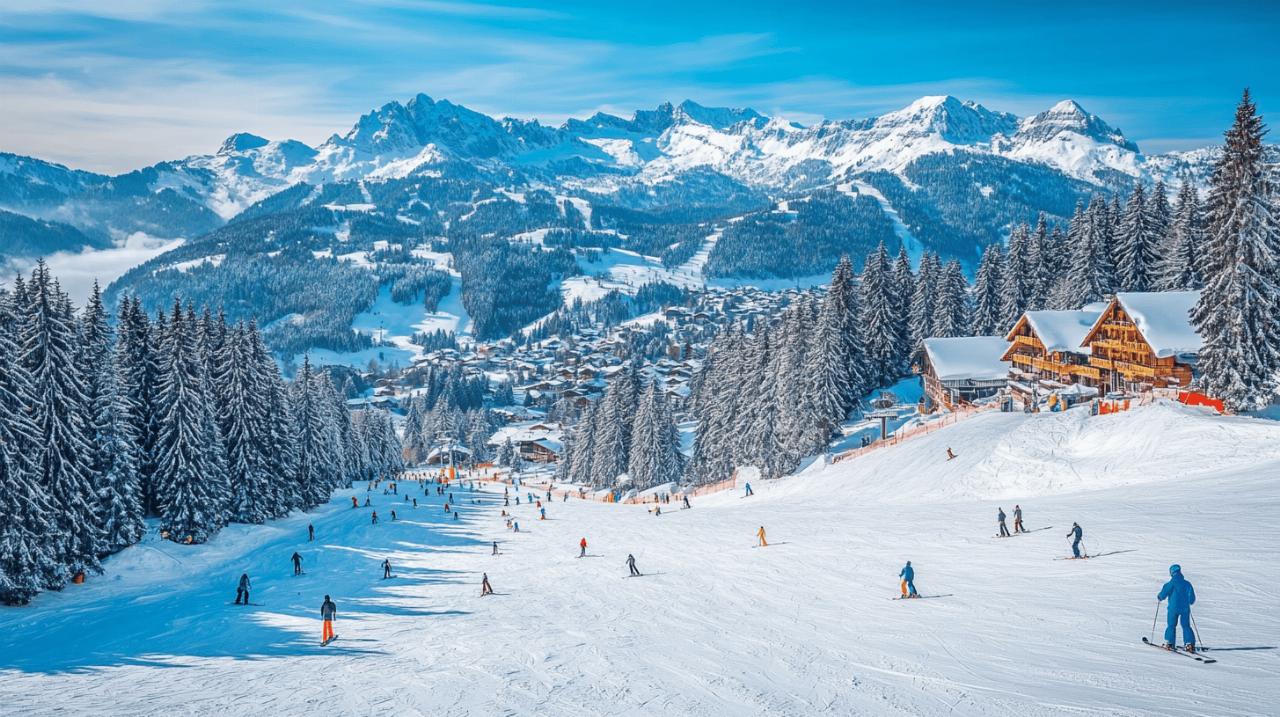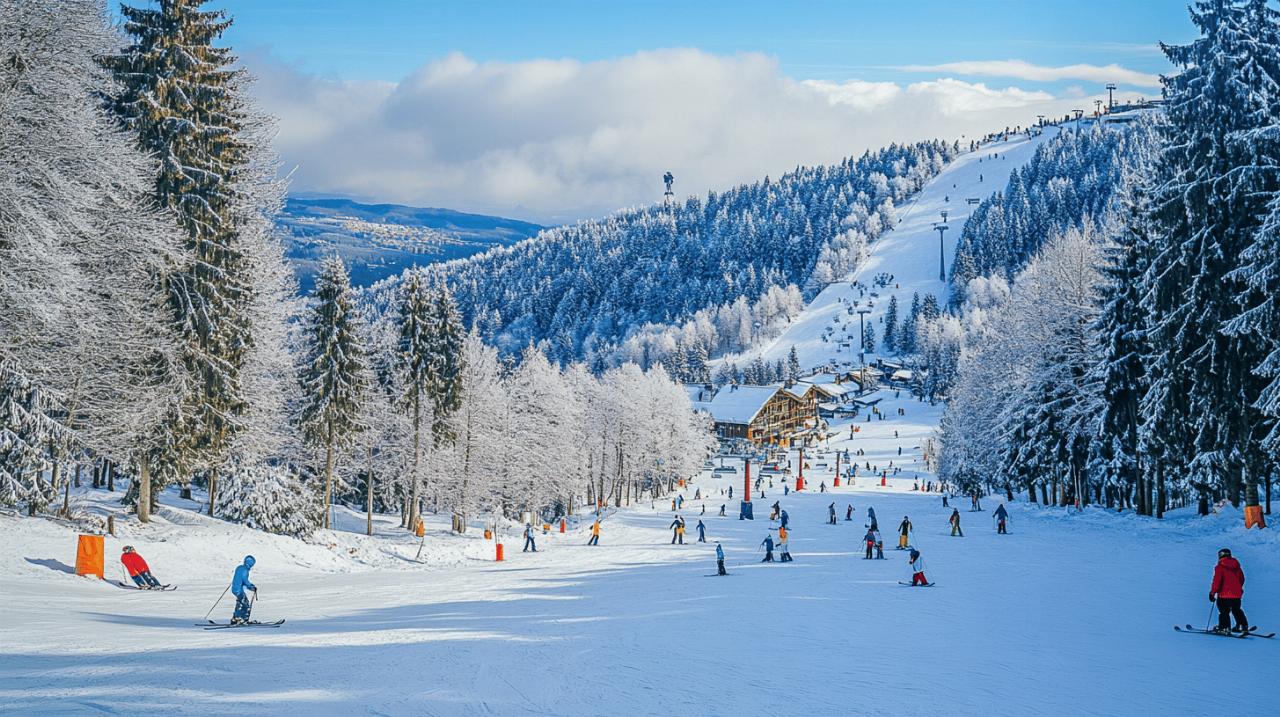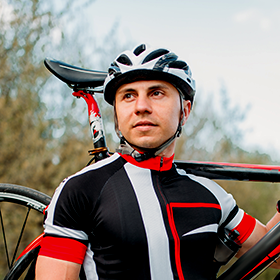When most people conjure images of European skiing, their minds drift to the towering peaks of the Alps or the sprawling resorts of the Pyrenees. Yet tucked away in the rolling hills of the Ardennes, Belgium offers a surprisingly accessible and charming winter sports scene that appeals to families, beginners, and those seeking a low-key snow experience without the intimidating grandeur or expense of larger Alpine destinations. With compact pistes, friendly facilities, and a distinctly local atmosphere, Belgian ski stations provide a refreshing alternative for a weekend escape or a first-time adventure on the snow.
Understanding Belgium's Unique Ski Landscape in the Ardennes
Belgium is not renowned for towering mountains or endless powder fields, but what it lacks in altitude it makes up for in accessibility and charm. The Ardennes region, characterised by forested hills and gentle ridges, hosts the majority of the country's ski infrastructure. The landscape here is modest compared to the colossal Alpine domaines, with the highest points reaching just over six hundred metres. This intimate scale creates a welcoming environment for those who might find larger resorts overwhelming or intimidating. The focus is less on achieving vertical thrills and more on enjoying the simple pleasure of gliding through snow-covered woodlands and open fields.
What makes belgian ski stations different from alpine resorts
Belgian ski resorts operate on a completely different philosophy from the sprawling multi-valley networks found in France or Switzerland. Rather than vast interconnected piste networks served by dozens of lifts, Belgian stations are compact, often featuring just a handful of runs and a few modest ski lifts. The total combined length of slopes across all Belgian resorts amounts to fewer than ten kilometres, a figure that would represent just a fraction of a single resort in the Alps. This smaller scale translates to shorter queues, less crowded slopes, and a more relaxed pace that many visitors find refreshing. The infrastructure is simple but functional, with lift capacity designed to handle local demand rather than international tourist hordes.
Geography and Climate: What to Expect When Planning Your Trip
The relatively low altitude of Belgian ski areas means that snow conditions are inherently variable and often dependent on brief cold spells. Unlike Alpine resorts that benefit from reliable snowfall throughout the season, the Ardennes experience more temperamental weather patterns. Snow cover can arrive suddenly and disappear just as quickly, making it essential to monitor forecasts and webcams before committing to a visit. The terrain itself is gentle, with moderate gradients that rarely exceed challenging steepness. This geography makes Belgian slopes ideal for learning and progression but less suited to advanced skiers seeking steep descents or off-piste adventures. The climate also means that the season is shorter and less predictable, typically spanning from December through February when conditions allow.
Top Belgian Ski Resorts Ranked by Skill Level and Experience
With just over a dozen ski stations scattered across the Ardennes, Belgium offers a manageable selection of destinations, each with its own character and strengths. Understanding which resort aligns with your skill level and expectations is key to enjoying your visit. Some locations cater primarily to beginners and families, offering gentle green slopes and supportive learning environments, while others feature more varied terrain that can challenge intermediate skiers looking to refine their technique.
Best Stations for Beginners and Families: Wanne and Beyond
Val de Wanne stands out as one of the most family-friendly destinations in Belgium, boasting the longest piste in the country at roughly one kilometre. This extended run provides beginners with ample space to practice without feeling rushed or confined, while the presence of dedicated beginner areas ensures that novices can build confidence away from faster skiers. The resort also offers cross-country tracks spanning three and eight kilometres, along with sledging facilities that appeal to younger children or those not yet ready for downhill skiing. Equipment rental is available on-site, removing the barrier of needing to invest in gear before trying the sport. The atmosphere at Val de Wanne is relaxed and welcoming, with a local charm that makes it easy for families to spend a full day enjoying the snow.
Another excellent option for those new to skiing is Le Monty Lierneux, which features two ski runs measuring six hundred and eight hundred metres respectively. Located at an altitude of just over five hundred metres, the resort benefits from decent snow coverage when conditions align. Beyond the downhill options, Le Monty offers extensive cross-country circuits ranging from just under four kilometres to over eight kilometres, plus snowshoeing trails for those who prefer a quieter pace. A short fifty-metre sledding track adds to the family appeal, making it easy to keep everyone entertained throughout the day. The variety of activities ensures that even if skiing proves challenging or tiring, there are alternative ways to enjoy the winter landscape.
Challenging Pistes for Intermediate Skiers: Ovifat and Baraque de Fraiture
For skiers with some experience under their belt, Ovifat presents one of the more interesting challenges in Belgium. The resort features three slopes graded as green, blue, and red, with the red run representing the only slope of this difficulty level in the entire country. This steeper descent attracts intermediate skiers looking to test themselves without venturing into the full-blown Alpine experience. The red piste at Ovifat offers a satisfying sense of progression and achievement, especially on days when the snow quality is good and the slope has been well prepared. Equipment rental is readily available, and the sledging slope adds an element of fun for those taking breaks between runs.
Baraque de Fraiture holds the distinction of being the highest ski resort in Belgium, perched at an altitude of six hundred and fifty metres. This elevation advantage means that when snow does fall, it tends to linger longer here than at lower resorts. The station offers two kilometres of slopes, making it the largest ski area in the country by this measure. The terrain at Baraque de Fraiture includes runs suitable for beginners as well as more varied gradients that challenge intermediates. The resort's three slopes provide enough variety to keep skiers engaged for a full day, while the availability of ski and snowboard equipment rental ensures accessibility for visitors without their own gear. The location at one of Belgium's highest points also offers scenic views across the surrounding Ardennes landscape, adding to the overall experience.
Practical guide: equipment, snow conditions and facilities
Navigating the practicalities of a ski day in Belgium requires a different approach than planning a trip to a major Alpine resort. The smaller scale and variable conditions mean that flexibility and preparation are essential. Understanding what to bring, where to rent equipment, and how to assess snow conditions will greatly enhance your experience and help avoid disappointment.
Hire Equipment and What to Bring for Your Belgian Ski Day
One of the significant advantages of Belgian ski stations is the widespread availability of equipment rental at virtually every resort. This accessibility means that newcomers to skiing need not commit to purchasing expensive gear before determining whether the sport appeals to them. Rental facilities typically offer skis, poles, boots, and helmets, with staff available to help ensure proper fitting and provide basic guidance on usage. Prices are generally reasonable compared to larger resorts, reflecting the local nature of the clientele and the shorter duration of most visits.
Beyond ski equipment, dressing appropriately for the variable Ardennes weather is crucial. Layering is essential, as temperatures can fluctuate throughout the day and physical exertion generates warmth that static observation does not. Waterproof outer layers are advisable, as the lower altitude means that precipitation can sometimes arrive as sleet or freezing rain rather than dry powder. Gloves, hats, and neck warmers help maintain comfort, while sturdy waterproof boots are important for walking around the resort areas. Sunscreen and sunglasses should not be overlooked, as reflection from snow can cause sunburn even on overcast days. Bringing snacks and hot drinks in a thermos can also enhance the day, as on-site facilities vary in scope and availability depending on the resort.
Checking snow reports and understanding variable conditions
Due to the unpredictable nature of snowfall in Belgium, consulting current conditions before setting out is not merely advisable but essential. Most resorts maintain websites with live webcams and regularly updated snow reports detailing coverage depth and quality. These resources provide invaluable insight into whether a trip will be worthwhile or whether conditions have deteriorated to the point where skiing is impractical. Social media channels and local winter sports forums can also offer real-time reports from visitors on the ground, providing a more nuanced picture than official sources alone.
Understanding what constitutes acceptable skiing conditions in the Belgian context is also important. Unlike Alpine resorts where metres of base coverage are standard, Belgian slopes can operate with much thinner snow layers, sometimes augmented by artificial snow when natural coverage is insufficient. This means that pistes may be narrower or less extensive than during optimal conditions, and some runs might be closed if coverage is inadequate. Flexibility in planning allows skiers to take advantage of good conditions when they arise, rather than being disappointed by fixed commitments made weeks in advance. The short distances from major cities like Liege and Brussels to the main ski areas mean that spontaneous day trips are entirely feasible, allowing for responsive decision-making based on current weather and snow reports.
Beyond the Slopes: Alternative Winter Activities in Belgian Ski Areas
While downhill skiing naturally takes centre stage at Belgian ski resorts, the broader winter landscape of the Ardennes offers a wealth of alternative activities that appeal to varied interests and abilities. These options ensure that even if snow conditions are marginal for alpine skiing, a trip to the region can still deliver a satisfying winter experience.
Cross-Country Skiing and Luge Options in the Region
Cross-country skiing, or ski de fond, thrives in the Ardennes thanks to the gently rolling terrain and extensive network of trails that wind through forests and across open fields. Resorts such as Le Monty Lierneux and Thier des Rexhons offer multiple circuits ranging from shorter loops of a few kilometres to more demanding routes exceeding ten kilometres. These trails provide an excellent cardiovascular workout while allowing participants to enjoy the tranquil beauty of the winter landscape at a more contemplative pace than downhill skiing permits. Equipment rental is available at most locations that maintain cross-country routes, making it easy to try this discipline without prior investment.
Sledging and luge activities add another dimension to the winter sports offerings, appealing especially to families with young children or groups looking for lighthearted fun. Dedicated sledging slopes are available at several resorts, with some offering extended tracks that provide thrilling descents without the technical demands of skiing. The simplicity of sledging makes it accessible to virtually anyone, and the laughter and excitement it generates create memorable shared experiences. Snowshoeing represents yet another alternative, with marked trails allowing participants to explore quieter corners of the Ardennes that remain inaccessible to skiers. This slower-paced activity offers opportunities for wildlife observation and photography, adding a contemplative element to a winter outing.
Après-Ski and Wellness: Spa Facilities Near the Pistes
The tradition of après-ski, while perhaps less raucous in Belgium than in some Alpine resorts, still holds an important place in the local winter sports culture. Cosy lodges and cafés near the slopes provide welcoming spaces to warm up with hot chocolate or a local beer after a day on the snow. The emphasis is on relaxation and convivial conversation rather than high-energy nightlife, reflecting the family-oriented nature of Belgian ski culture. Traditional Ardennes cuisine, featuring hearty stews and warming dishes, is often available at these establishments, providing satisfying sustenance after physical exertion in the cold.
The proximity of many ski resorts to the town of Spa, famous for its thermal waters and wellness facilities, offers a unique opportunity to combine winter sports with therapeutic relaxation. After a day of skiing or cross-country exploration, visitors can indulge in thermal baths, saunas, and spa treatments that ease tired muscles and promote deep relaxation. This combination of active outdoor pursuits with restorative wellness activities creates a balanced winter holiday experience that appeals to those seeking more than just time on the slopes. The shorter distances between resorts and amenities in Belgium make such multi-faceted trips entirely feasible, even within a single weekend, offering a distinctly Belgian take on the winter sports holiday that prioritises comfort, accessibility, and local charm over extreme altitude or extensive piste networks.


